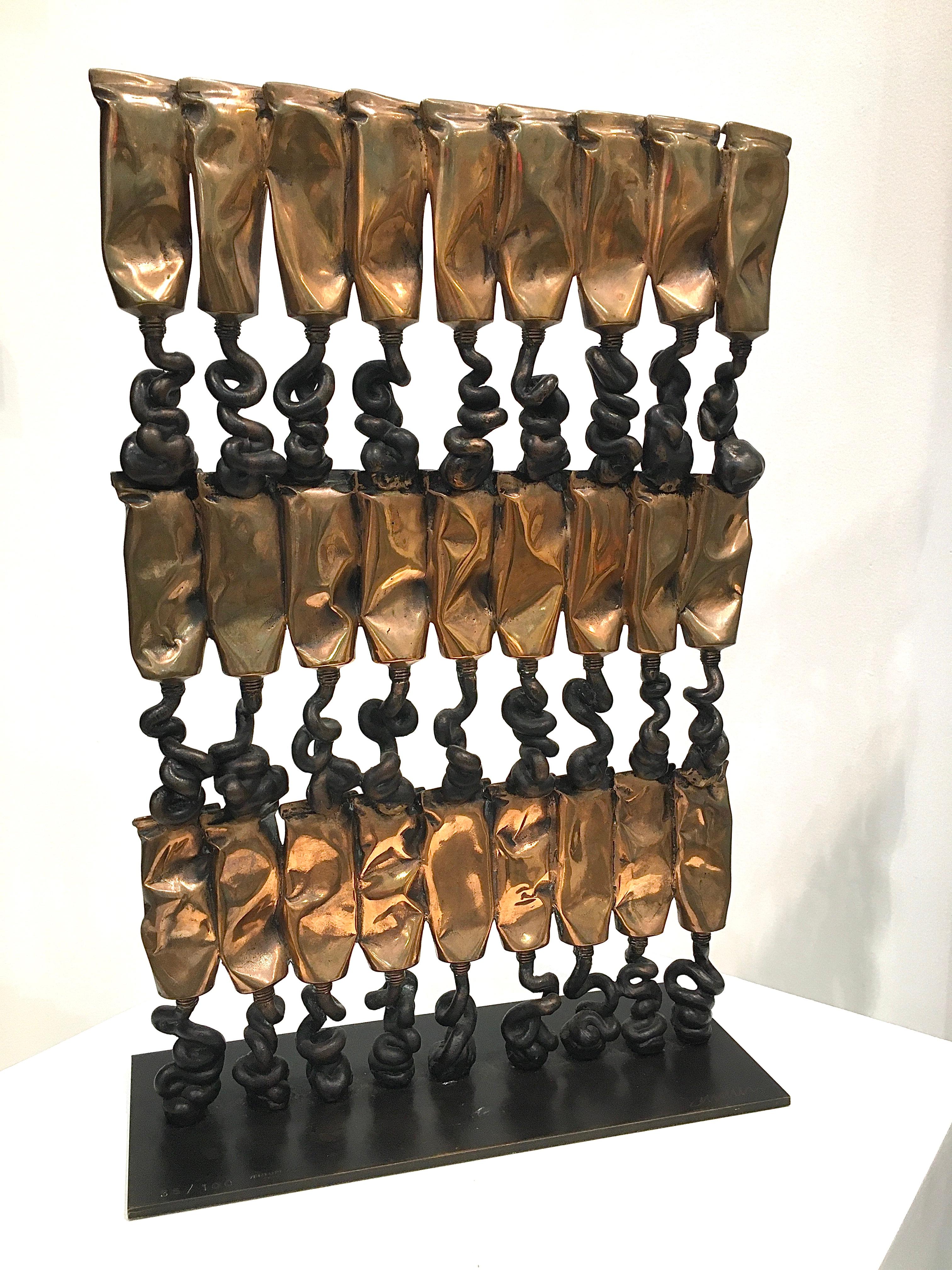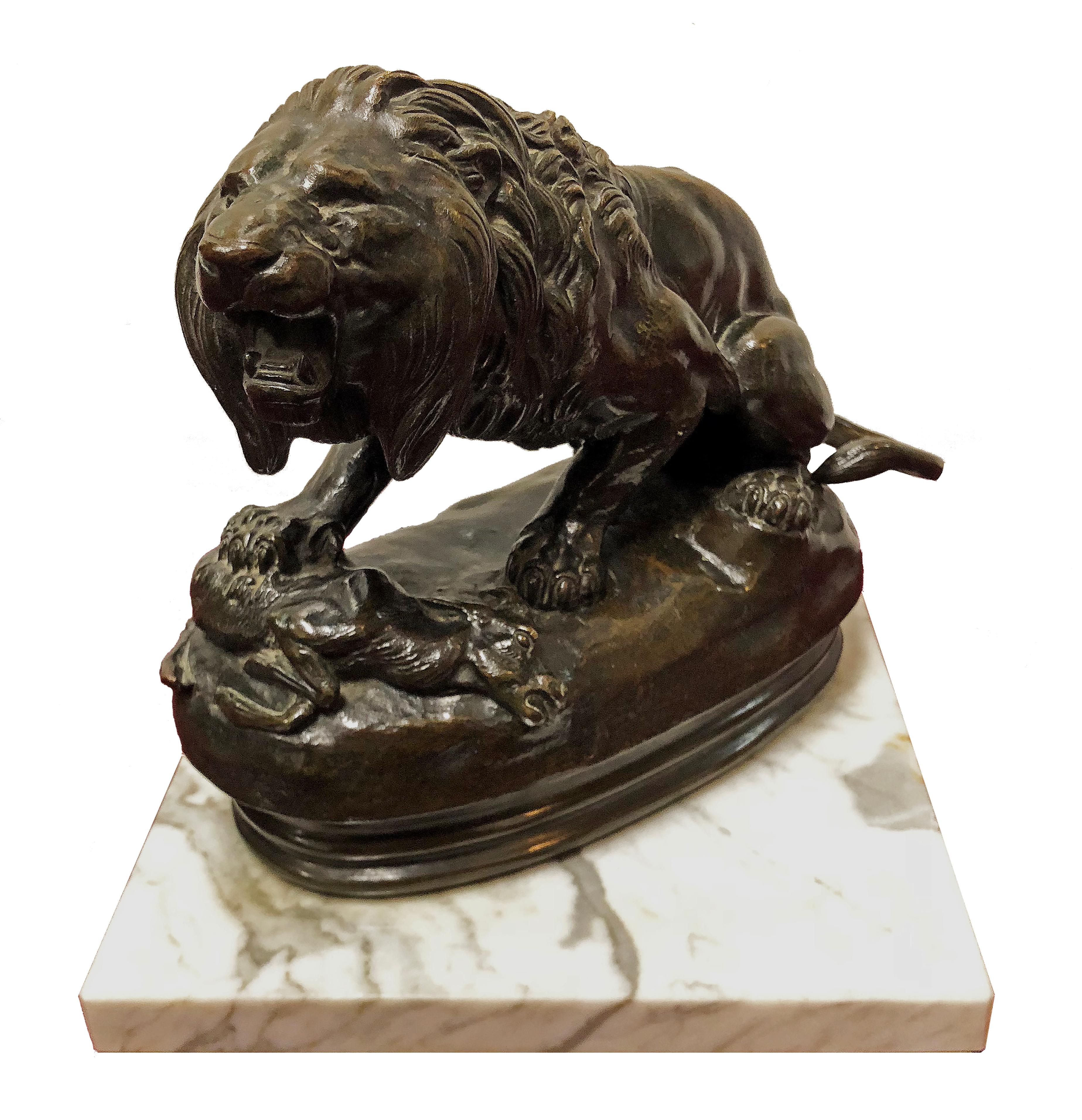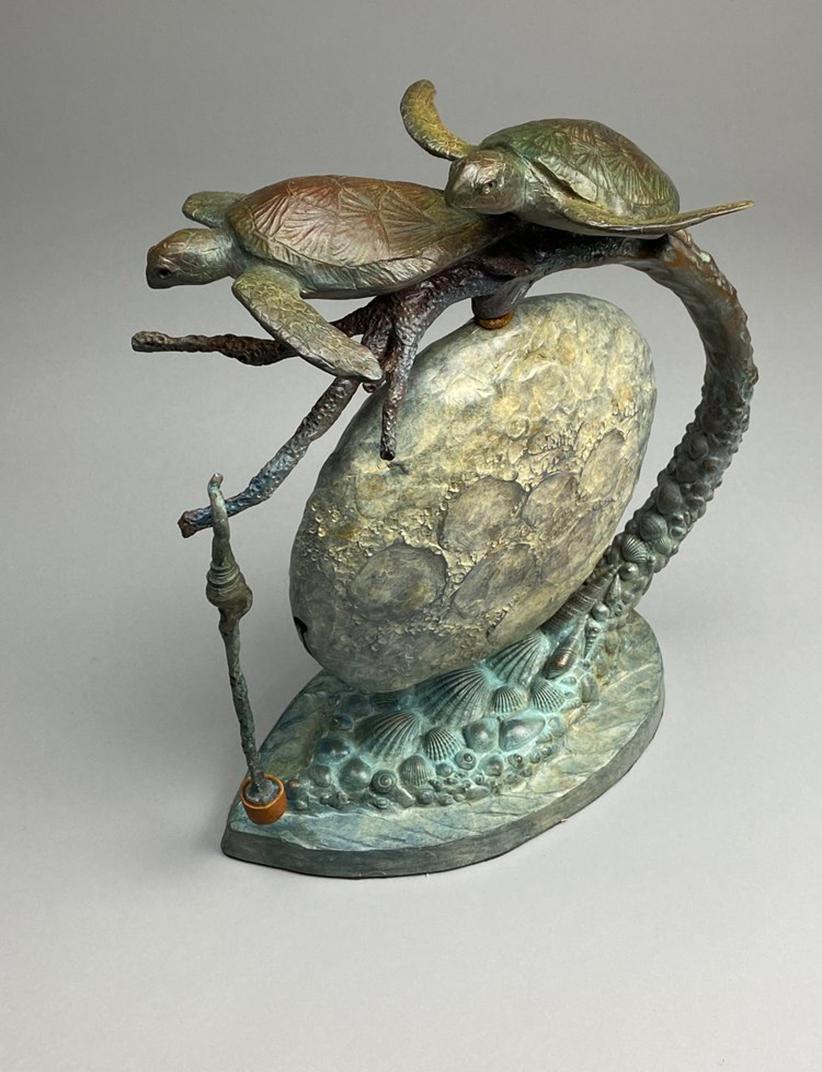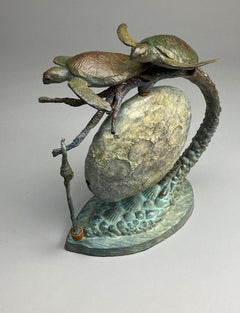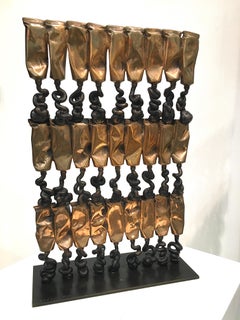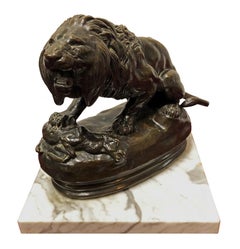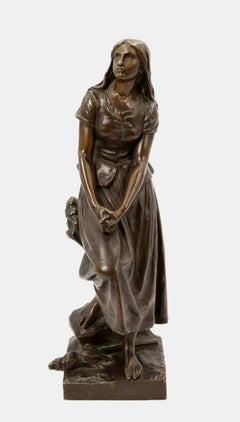Items Similar to Generations
Want more images or videos?
Request additional images or videos from the seller
1 of 6
Bryce PettitGenerations2025
2025
About the Item
Bronze sculpture with an inscribed signature and edition number by the Artist on the bronze base of the piece.
7/30
- Creator:Bryce Pettit (1974, American)
- Creation Year:2025
- Dimensions:Height: 30 in (76.2 cm)Width: 30 in (76.2 cm)Depth: 12 in (30.48 cm)
- Medium:
- Movement & Style:
- Period:
- Condition:
- Gallery Location:Colorado Springs, CO
- Reference Number:1stDibs: LU2741216148302
About the Seller
5.0
Vetted Professional Seller
Every seller passes strict standards for authenticity and reliability
Established in 1979
1stDibs seller since 2024
11 sales on 1stDibs
Typical response time: 1 to 2 days
- ShippingRetrieving quote...Shipping from: Colorado Springs, CO
- Return Policy
Authenticity Guarantee
In the unlikely event there’s an issue with an item’s authenticity, contact us within 1 year for a full refund. DetailsMoney-Back Guarantee
If your item is not as described, is damaged in transit, or does not arrive, contact us within 7 days for a full refund. Details24-Hour Cancellation
You have a 24-hour grace period in which to reconsider your purchase, with no questions asked.Vetted Professional Sellers
Our world-class sellers must adhere to strict standards for service and quality, maintaining the integrity of our listings.Price-Match Guarantee
If you find that a seller listed the same item for a lower price elsewhere, we’ll match it.Trusted Global Delivery
Our best-in-class carrier network provides specialized shipping options worldwide, including custom delivery.More From This Seller
View AllSelf-Made Man 14"
Located in Colorado Springs, CO
Signature of the Artist engraved in the bronze base of the piece with an edition number.
Open Edition
Category
21st Century and Contemporary Realist Sculptures
Materials
Bronze
Sea Turtle Serenade
By James Moore
Located in Colorado Springs, CO
Edition 5/30. Original bronze bell sculpture by artist James Moore. Inscribed.
Category
21st Century and Contemporary Realist Figurative Sculptures
Materials
Bronze
The Boss
By Sandy Scott
Located in Colorado Springs, CO
Signed/inscribed by Artist on bronze base of piece with edition number.
3/25
Category
21st Century and Contemporary Realist Sculptures
Materials
Bronze
$4,200
Classic Equine
By Sandy Scott
Located in Colorado Springs, CO
Signed/inscribed by Artist on bronze base of piece with edition number.
3/50
Category
21st Century and Contemporary Realist Sculptures
Materials
Bronze
$6,500
Journey Through 10000
By Sandy Scott
Located in Colorado Springs, CO
Signed/inscribed by Artist on bronze base of piece with edition number.
6/50
Category
21st Century and Contemporary Realist Sculptures
Materials
Bronze
After the Hunt Still Life
By Sandy Scott
Located in Colorado Springs, CO
Signed/inscribed by Artist on bronze base of piece with edition number.
9/35
Category
21st Century and Contemporary Realist Sculptures
Materials
Bronze
You May Also Like
"Ex Nihilo Fragment 3", Frederick Hart, Figurative Bronze Sculpture, 43x31x18 in
By Frederick Hart
Located in Dallas, TX
"Ex Nihilo Fragment 3" by Frederick Hart is a figurative bronze with the edition of 61/65.
I saw Ex Nihilo (Out of Nothingness) as a single expression of creation, as the metamorphosis of divine spirit and energy. The figures emerge from the nothingness of chaos, caught in the moment of eternal transformation — the majesty and mystery of divine force in a state of becoming.
-Frederick Hart
Ex Nihilo, Fragment No.3. Detail from the full-scale plaster for the final stone sculpture of Ex Nihilo, commissioned as part of The Creation Sculptures at Washington National Cathedral...
Category
Early 2000s Realist Figurative Sculptures
Materials
Bronze
Frederick Hart"Ex Nihilo Fragment 3", Frederick Hart, Figurative Bronze Sculpture, 43x31x18 in, 2005
$44,000 Sale Price
20% Off
Defi a Newton
By Arman
Located in Palm Beach, FL
ARMAN 1928 - 2005
Bronze sculpture, 2004
Polished bronze with black patina, 2004, stamped with foundry stamp and numbered, published by Venturi Arte, Bologna
Signed and numbered...
Category
Early 2000s Realist Figurative Sculptures
Materials
Bronze, Gold Leaf
$21,000
Lion and Antelope (No. 23)
Located in Missouri, MO
Alfred Barye (1839-1882)
"Lion and Antelope"
Bronze
Approx. 7.5H x 9W x 4D inches
Signed "BARYE.ALF" and Inscribed under base "NO. 23 LION AND ANTELOPE"
The son of a goldsmith, Parisian born Antoine-Louis Bayre was a sculptor of animal subjects and acclaimed, not only for his apparent skill, but as the founder of what became known as the French Animaliers School. Among his patrons were representatives of the state government and royalty including the Duke of Orleans and the Dukes of Luynes, Montpensier and Nemours.
Well compensated financially, he was able to buy the best of materials and hire the country's most skilled foundry craftsmen. The foundry he hired was owned by Ferdinand Barbedienne, and casts from this period were stamped with the letters, FB. However, he did not make a lot of money from his work because he was such a perfectionist that often he would not sell his work because he thought it was not 'quite right'. In 1848, he declared bankruptcy, and his molds and plaster casts were sold along with the copyrights.
Bayre's specialty was aroused, angry seeming wild game such as lions and tigers and elephants, but he also did equestrian groups and mythology figures. In order to do realistic depictions of animal anatomy, he spent much time at the Jardin de Plantes in Paris.
His early training was as an apprentice to a metal engraver, but being drafted in the army in 1812, ended that education. In 1832, he had established his own studio, and unique at that time was his method of cold stamping his bronze casts, so that each one had a special number. He had his first entry, The Milo of Croton...
Category
19th Century Realist Figurative Sculptures
Materials
Bronze
Price Upon Request
Joan of Arc / - The Liberating Power of Faith -
Located in Berlin, DE
Eugène Laurent (1832 Gray - 1898 Paris), Joan of Arc, around 1880. Brown patinated bronze on a cast rectangular plinth with tree trunk and distaff. 40 cm (height) x 15.5 cm (length) x 15.5 cm (depth), weight 6.1 kg. Signed “E.[ugène] Laurent.” on the plinth and inscribed “HZ” on the reverse.
- somewhat stained due to patina, traces of oxidation behind the distaff, slightly rubbed in places, overall still in very good condition for its age
- The Liberating Power of Faith -
At the age of 13, Jeanne, a peasant girl born in Lorraine around 1412, heard the voices of Saints Catherine and Margaret and the Archangel Michael telling her that she had been chosen to liberate France from English occupation. By 1428, Henry VI's troops had advanced to the Loire and besieged Orléans, a strategic city for the further conquest of France. Joan of Arc went to the exile of Charles VII and, with the king's consent, led the French army into battle against the besiegers. After four days of fighting, the English were defeated and Orléans was liberated. Other victorious battles followed, until in 1430 she fell into the hands of the enemy, who had her executed as a witch by the Inquisition. In May 1431, Joan of Arc was burned at Rouen.
After the final expulsion of the English, the "Maid of Orleans" was rehabilitated by the Church in 1456. She was finally canonized in 1920. By then, Joan of Arc had become a national heroine and the patron saint of France. After the French Revolution, the strengthening of the nation-state and the Franco-Prussian War of 1870-71, Joan of Arc was again venerated and depicted in numerous bronze statues.
Eugène Laurent depicts the young girl listening to the voices of the saints who reveal her destiny. With her eyes wide open, she gazes at the sky as if she were looking at the revealed future. Her hands are clasped in prayer, indicating her willingness to face her destiny. Leaning against a tree trunk, she treads with one foot on a raised stone, which, together with her upward gaze, gives her an upward movement that announces her higher mission. At the same time, however, she steps down from the stone to the earth, emphasizing her earthly mission, for which she has already taken the first step. In doing so, she steps over the discarded distaff, which refers to her "lower" origins and belongs to the life she has now left behind.
Laurent manages to capture the fateful emotion that makes us look at Joan of Arc in awe, even though she is a simple peasant girl. Even if the design is aimed at the overall impression, the artist has nevertheless worked out certain details, such as the tied waistcoat, very realistically and, in addition to the skin, has particularly depicted the material quality of the textiles.
About the artist
Eugène Laurent studied at the École des Beaux-Arts in Paris, where he won a prize in 1860. He then joined the studio of Jacques Antoine Theodore Coinchon. As a freelance artist, he supplied the Paris Salon with statues, portrait busts, and medallions from 1861 to 1893. He also created large sculptures such as the monument to Jacques Callot in Nancy (1877) and the statue of François Boucher at the Paris City Hall.
GERMAN VERSION
Eugène Laurent (1832 Gray - 1898 Paris), Jeanne d’Arc, um 1880. Braun patinierte Bronze auf mitgegossener rechteckiger Plinthe mit Baumstamm und Spinnrocken. 40 cm (Höhe) x 15,5 cm (Länge) x 15,5, cm (Tiefe), Gewicht 6,1 kg. Auf der Plinthe mit „E.[ugène] Laurent.“ signiert und rückseitig mit „HZ“ bezeichnet.
- patinabedingt etwas fleckig, Oxidationsspuren hinter dem Spinnrocken, stellenweise leicht berieben, insgesamt in einem altersgemäß noch sehr guten Zustand
- Die befreiende Kraft des Glaubens -
Als 13jähige vernahm das um 1412 in Lothringen geborene Bauernmädchen Jeanne Stimmen der Heiligen Katharina und Margarete und des Erzengels Michael, die ihr verkündeten, auserwählt zu sein, Frankreich von der englischen Besatzung zu befreien. 1428 waren die Truppen von Heinrich VI. bis zur Loire vorgerückt und belagerten die für eine Weitereroberung Frankreichs strategisch wichtige Stadt Orléans. Jeanne d’Arc begab sich ins Exil Karls VII. und führte mit der Einwilligung des Königs das französische Heer gegen die Belagerer ins Feld. Nach viertätiger Schlacht unterlagen die Engländer und Orléans war befreit. Es folgten weitere siegreiche Kämpfen bis sie 1430 in die Hände des Feindes fiel, der bei der Inquisition ihre Hinrichtung als Hexe erwirkte. Im Mai 1431 wurde Jeanne d’Arc in Rouen verbrannt.
Im Anschluss an die endgültige Vertreibung der Engländer wurde die „Jungfrau von Orléans“ 1456 von der Kirche rehabilitiert. 1920 erfolgte schließlich ihre Heiligsprechung. Inzwischen galt Jeanne d’Arc als Nationalheldin und Schutzpatronin Frankreichs. In der Nachfolge der Französischen Revolution, dem Erstarken der Nationalstaatlichkeit und dem Deutsch-Französischen Krieg von 1870/71 erfuhr Jeanne d‘Art eine neue Verehrung und wurde in zahlreichen Bronzestatuen dargestellt.
Eugène Laurent zeigt das junge Mädchen wie sie die Stimmen der Heiligen vernimmt, die ihr das von der Vorsehung bestimmte Schicksal offenbaren. Mit weit geöffneten Augen blickt sie gen Himmel als ob sie die offenbarte Zukunft schauen würde. Dabei hat sie die Hände in Gebetshaltung geschlossen, was zugleich vom Willen kündet, sich ihrem Schicksal zu stellen. An einen Baumstamm gelehnt, tritt sie mit dem einen Fuß auf einen erhöhten Stein, was ihr – zusammen mit dem aufwärts gerichteten Blick – eine von ihrer höheren Mission kündende Aufwärtsbewegung verleiht. Zugleich tritt sie aber auch von dem Stein auf die Erde herab, wodurch ihre irdische Mission hervorgehoben wird, zu der sie bereits den ersten Schritt getan hat. Dabei steigt sie über den abgelegten Spinnrocken hinweg, der auf ihre ‚niedere‘ Herkunft verweist und zum nun abgelegten Leben gehört.
Laurent gelingt es, die schicksalhafte Ergriffenheit zur Darstellung zu bringen, die uns Jeanne d‘Arc, obwohl sie ein einfaches Bauernmädchen ist, ehrfürchtig betrachten lässt. Auch wenn die Gestaltung auf den Gesamteindruck zielt, hat der Künstler doch einzelne Details, wie die zugebundene Weste, äußerst realitätsnah herausgearbeitet und neben der Haut insbesondere die stoffliche Qualität der Textilien zur Darstellung gebracht.
zum Künstler
Eugène Laurent studierte an der Pariser École des Beaux-Arts und wurde 1860 von der Akademie mit einem Preis ausgezeichnet. Anschließend trat er in das Atelier Jacques Antoine Theodore Coinchon ein. Als freischaffender Künstler beschickte er von 1861 bis 1893 den Pariser Salon mit Statuen, Porträtbüsten und Medaillons. Zudem schuf er Großplastiken wie das Denkmal Jacques Callots in Nancy (1877) und die Statue...
Category
1890s Realist Figurative Sculptures
Materials
Bronze
"Doubt" figurative sculpture bronze limited at 8 pieces 16x16x16cm 2009
By Emmanuelle Vroelant
Located in Saint Pol de Léon, Bretagne
"Doubt" bronze figurative sculpture limited at 8 pieces 16x16x16cm left n° 3/8 certificate emmanuelle vroelant
in 2009 Emmanuelle Vroelant decided to start scu...
Category
21st Century and Contemporary Realist Figurative Sculptures
Materials
Bronze
"Le Rieur Napolitain" by Jean-Baptiste Carpeaux (1827–1875)
Located in Edinburgh, GB
A stunning bronze bust "Le Rieur Napolitain" by Jean-Baptiste Carpeaux (1827–1875), a master of 19th-century French sculpture. This piece captures the joyful expression of a young Neapolitan boy, reflecting Carpeaux’s signature realism and dynamic movement.
Details:
Artist: Jean-Baptiste Carpeaux
Title: Le Rieur Napolitain (The Laughing Neapolitan)
Material: Bronze
Dimensions: Height 27 cm, Width 19 cm, Depth 12 cm
Period: 19th century
Condition: Good, with a beautiful natural patina
Jean-Baptiste Carpeaux (1827–1875) was a leading French sculptor of the 19th century, known for his ability to infuse lifelike movement and emotional depth into his works. Le Rieur Napolitain (The Laughing Neapolitan) is a striking example of his dynamic and expressive style, embodying his fascination with naturalism and human vitality.
This bust is part of Carpeaux’s series of Neapolitan figures...
Category
Mid-19th Century Realist Figurative Sculptures
Materials
Bronze

